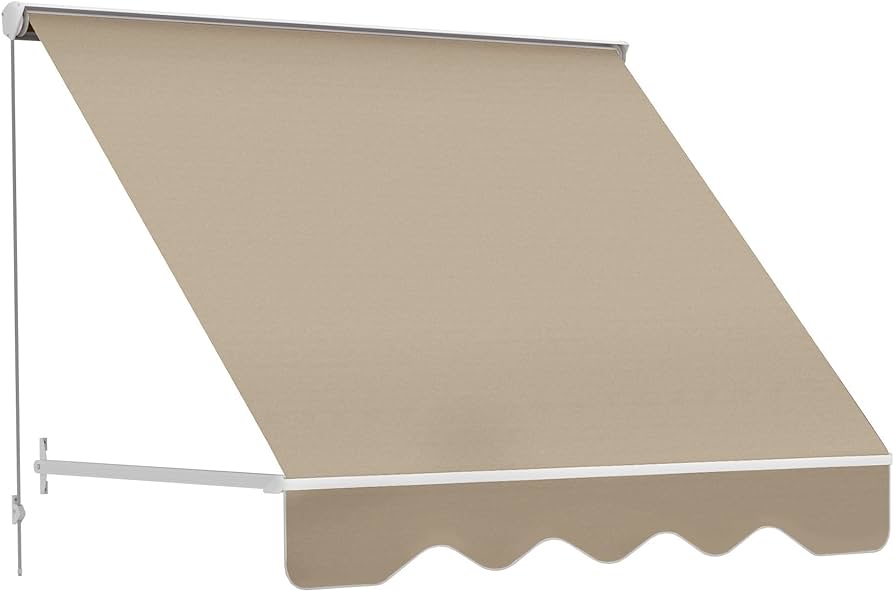To adjust the speed of a VFD, simply access the control panel and use the frequency command. By adjusting the frequency, you can control the speed of the VFD.
This allows for precise speed adjustments based on the specific requirements of the application. Introducing Variable Frequency Drives (VFDs) into your industrial processes can bring numerous benefits such as energy savings and improved motor control. However, to fully leverage the advantages of VFDs, understanding how to adjust their speed is crucial.
We will provide a concise guide on adjusting VFD speed, focusing on the steps required to make accurate and effective adjustments. With this knowledge, you will be able to optimize the performance of your VFD systems and achieve desired speed control for your applications. So, let’s dive in and explore how you can effortlessly adjust the speed of a VFD.

Credit: www.amazon.com
Understanding Vfd Speed Control
Adjusting Variable Frequency Drive (VFD) speed is an essential part of optimizing motor performance. VFDs allow you to control motor speed based on specific requirements, resulting in increased efficiency and precise operation. In this section, we will delve into the fundamentals of VFD speed control, including the basic components of a VFD, frequency and voltage control, and programming VFD parameters.
Basic Components Of A Vfd
A VFD consists of three main components:
- Rectifier: Converts the incoming AC voltage to DC voltage.
- DC Bus: Stores and smoothens the converted DC voltage.
- Inverter: Converts the DC voltage back to AC voltage with variable frequency and voltage control.
These components work together to change the frequency and voltage supplied to the motor, allowing for precise speed control.
Frequency And Voltage Control
The key to adjusting VFD speed lies in controlling the frequency and voltage supplied to the motor:
- Frequency Control: By adjusting the VFD’s output frequency, the motor’s speed can be varied. Increasing the frequency will result in a higher speed, while reducing the frequency will lower the speed accordingly.
- Voltage Control: Maintaining a constant voltage-to-frequency ratio is crucial to ensure the motor operates optimally at different speeds. The VFD adjusts the output voltage to correspond with the selected frequency, allowing for smooth motor performance.
The ability to independently control frequency and voltage makes VFD speed control highly versatile in various applications.
Programming Vfd Parameters
Programming specific parameters within the VFD allows for fine-tuning and customization of motor speed-related settings. These parameters include:
- Acceleration/Deceleration Time: Determines how quickly the motor will ramp up or slow down when the speed command changes.
- Minimum/Maximum Speed: Sets the limits for the lowest and highest achievable speeds of the motor.
- S-Curve Profile: Defines the rate of acceleration and deceleration, ensuring smooth transitions between different speeds.
By adjusting these parameters, you can optimize the motor’s overall performance and adapt it to specific operating conditions.

Credit: www.facebook.com
Methods To Adjust Vfd Speed
Adjusting the speed of a Variable Frequency Drive (VFD) is crucial in industrial applications to meet specific requirements and optimize performance. There are different methods to control the speed of a VFD, depending on the desired level of precision and integration with other systems. In this blog post, we will explore three common methods: manual control through the keypad interface, analog control using external signals, and digital control through a PLC or HMI.
Manual Control Through Keypad Interface
The keypad interface on the VFD allows operators to manually adjust the speed of the motor. It provides a straightforward and intuitive way to change the speed settings. By pressing the appropriate buttons or navigating through the menu options, the operator can increase or decrease the speed in real-time. This method is ideal for situations where immediate adjustments are required, or when direct operator control is preferred.
Analog Control Using External Signals
In some applications, precise control of the VFD speed is necessary and can be achieved by using analog control signals. External devices such as potentiometers or voltage signals can be connected to the VFD to control the speed. The analog control signal can be scaled and calibrated to correspond to the desired motor speed. This method offers finer control over the speed adjustments and can be easily integrated with other control systems.
Digital Control Through Plc Or Hmi
For industrial processes that require automated control and integration with other systems, digital control through a Programmable Logic Controller (PLC) or Human Machine Interface (HMI) is commonly used. The PLC or HMI sends digital signals to the VFD, commanding it to adjust the motor speed based on programmed conditions or input from sensors. This method allows for complex control logic and enables synchronization with other equipment.

Credit: www.linkedin.com
Frequently Asked Questions For How To Adjust Vfd Speed
How Do I Adjust The Speed Of A Vfd?
To adjust the speed of a VFD (Variable Frequency Drive), you can use the keypad on the VFD or a remote control. Simply navigate to the speed adjustment menu and input your desired speed using the arrow keys or numerical keypad.
Press Enter to confirm the new speed setting.
What Is The Purpose Of Adjusting Vfd Speed?
Adjusting the VFD speed allows you to control the output speed of connected motors or equipment. By decreasing or increasing the speed, you can optimize performance, reduce energy consumption, and match the required speed for different applications or processes.
Can I Adjust The Vfd Speed While The Motor Is Running?
Yes, it is possible to adjust the VFD speed while the motor is running. VFDs are designed to provide dynamic control, allowing for real-time speed adjustments during operation. This flexibility enables you to fine-tune the motor’s speed without interrupting the processes it is powering.
Conclusion
To conclude, adjusting the speed of a VFD (Variable Frequency Drive) is crucial for optimizing motor performance and energy efficiency. By following the step-by-step guide provided in this blog post, you can confidently and effectively adjust the VFD speed to meet your specific requirements.
Remember to consider factors such as load conditions, desired speed range, and the VFD’s programming options. With these insights, you’ll be able to achieve improved control and performance in your electrical systems.

